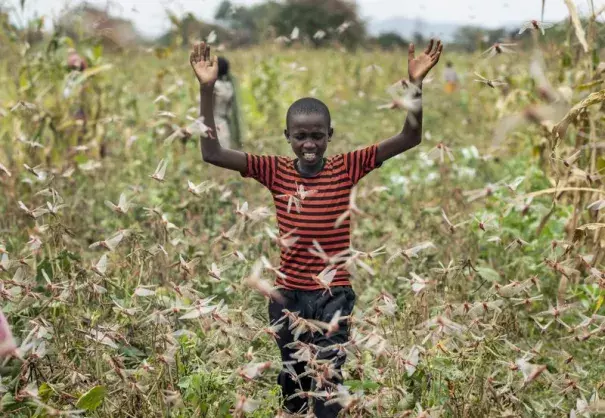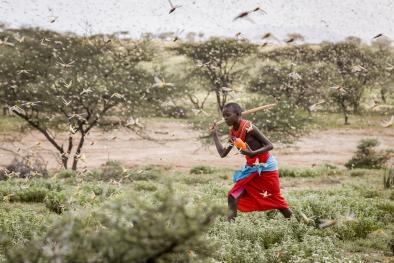Locusts, COVID-19, flooding pose 'triple threat' in Africa

Climate Signals Summary: Climate change is making extreme rainfall more common, like the heavy rains East Africa saw in 2019, which created the perfect breeding conditions for desert locusts. Extreme rainfall can also cause severe flooding like East Africa saw earlier this year.
Article Excerpt: Locusts, COVID-19 and deadly flooding pose a “triple threat” to millions of people across East Africa, officials warned Thursday, while the World Bank announced a $500 million program for countries affected by the historic desert locust swarms.
A new and larger generation of the voracious insects, numbering in the billions, is on the move in East Africa, where some countries haven’t seen such an outbreak in 70 years. Climate change is in part to blame.
The added threat of COVID-19 imperils a region that already was home to about 20% of the world’s population of food-insecure people, including millions in South Sudan and Somalia.
...
The number of locusts continues to grow despite the control efforts, and if that work is not sustained, the combined threat with COVID-10 and flooding “could have a catastrophic effect,” said FAO director-general Qu Dongyu.
...
The recent floods in parts of East Africa have killed nearly 300 people and displaced 500,000, slowing locust control work and increasing the risk of the virus’ spread, according to the International Federation of Red Cross and Red Crescent Societies.
“We are facing an unusually complex humanitarian situation,” Simon Missiri, the group’s Africa director, said in a statement.



